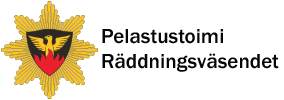

Rescue operations
Rescue Operations in Accidents
Rescue services provide urgent assistance in accident situations or when an accident threatens. Rescue operations refer to urgent tasks aimed at saving and protecting people, property, and the environment when an accident threatens or occurs, as well as limiting the damage caused by the accident and mitigating its consequences. Accident or threat situations include, among others:
- Fires
- Traffic accidents
- Hazardous material accidents (chemical and oil accidents)
- Natural disasters and collapses
- Explosions
- Inspection and verification tasks (automatic fire alarm alerts, smoke detector alerts)
- Rescue tasks for people and animals
- Damage control tasks
Additionally, rescue services assist other authorities, such as acting as first responders in urgent emergency medical tasks.
Rescue Operations Require a Functional Situation Awareness and Management System
Managing rescue operations requires good management structures as well as situational awareness and a situational picture. To gather situational awareness and manage rescue operations, the country is divided into five rescue operation cooperation areas in addition to the welfare regions and the city of Helsinki.
Normally, rescue operations are led by the rescue authority of the welfare region or the Helsinki rescue department in their own area. If necessary, for example, when the effects of an accident extend to several welfare regions or require the resources of several welfare regions, rescue operations can be centrally managed in the rescue operation cooperation area, of which there are five in the country. Additionally, if necessary, the accident situation can be managed nationally by the rescue authority of the Ministry of the Interior.

National management system for rescue operations

In the national management system for rescue operations, the highest authority is the rescue authority of the Ministry of the Interior. Below it are the national situation and command center arrangements for the rescue services of the welfare regions, under which are the management and situation and command center arrangements of the rescue operation cooperation areas. At the bottom of the diagrams are the rescue departments and rescue authorities of the welfare regions, as well as the management of rescue operations.
Rescue services handle 100 000 rescue tasks annually
Rescue services handle approximately 100,000 tasks annually. Of these tasks, 13% are fires, 14% are traffic accidents, 4% are damage control, 30% are inspection or verification tasks, 21% are first response tasks, and 18% are other rescue or assistance tasks.
For more information:
Tommi Luhtaniemi
Senior Rescue Inspector
tommi.luhtaniemi@pelastustoimi.fi
Tel. 0295 488 387


